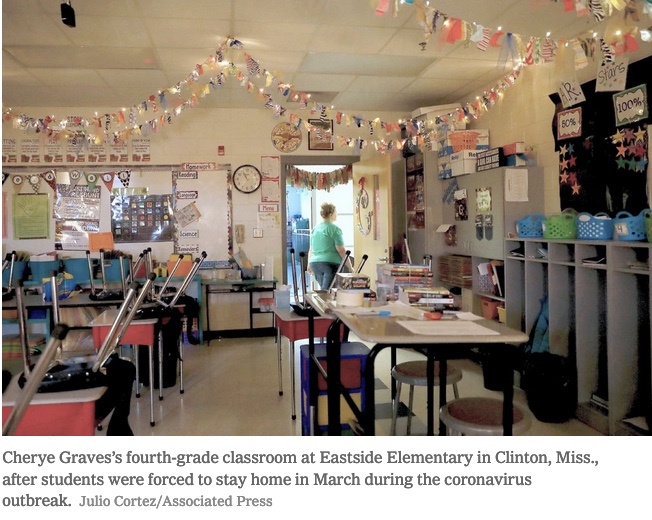As school districts across the country began to reveal reopening plans this week, parents and students were forced to grapple with a difficult reality: It is unlikely that many schools will return to a normal schedule this fall, requiring the grind of online learning, makeshift child care and stunted workdays to continue.
Students in Seattle are likely to go to school in person only once or twice a week, officials said. Half of Omaha’s students will attend Monday and Tuesday, and the other half Thursday and Friday, rotating Wednesdays. And Fairfax County, Va., outside Washington, said students would spend at least two days a week in class, with the rest online.
The governors of Connecticut and New Jersey announced guidance that they said would allow students to return to school, but left the details up to districts, with Gov. Phil Murphy of New Jersey acknowledging on Friday that some schools would likely need to adopt a hybrid model and restrict daily attendance.
Many of the nation’s largest districts have yet to announce plans, although Mayor Bill de Blasio of New York suggested on Friday that all of the city’s 1.1 million students are unlikely to return full-time during the pandemic. “One day there’s going to be a vaccine,” he said, “and I think that’s the day when you’re going to see things go back 100 percent — to every kid in the classroom — as normal.”
Reopening decisions are likely to vary greatly based on the size and density of districts, as well as region. In the South and West, where political leaders have been more eager to reopen their economies despite a recent upswing in coronavirus cases, school systems may be more likely to return to a full-time schedule, albeit with distance restrictions, new sanitation procedures and mask recommendations.
But for districts that hope to closely follow guidance from the Centers for Disease Control and Prevention, it would be nearly impossible to maintain sanitation and social distancing with normal school attendance. Class sizes in many schools would need to be cut by more than half. And while health experts generally recommend face coverings for both staff and students, some educators and parents say that is not realistic, especially for the youngest children.
Those complications are likely to prompt many districts — where administrators must decide how to implement the broad guidelines from federal and state health officials — to adopt a hybrid model in which students will spend some time in the classroom but a significant portion of the week at home.




